
Fundamentals
The very concept of a product, at its deepest meaning, often carries an unspoken presumption of ‘normalcy,’ a mold shaped by a singular, dominant cultural perspective. This inherent framing gives rise to what we call Product Bias ❉ a systemic inclination within the design, development, marketing, and distribution of goods that overlooks, underserves, or actively disadvantages specific user groups, particularly those from marginalized communities whose needs and characteristics diverge from the assumed norm. This delineation of Product Bias goes beyond a simple oversight; it represents a profound silence within the lexicon of commercial creation, a silence that speaks volumes about historical power dynamics and ingrained societal preferences.
It is an interpretation rooted in the understanding that products are not neutral entities; they are artifacts imbued with the perspectives and priorities of their creators. When those perspectives are narrow, the resulting products reflect that constricted vision, leaving out a wealth of human experience.
For communities whose hair traditions are rich and varied, like those of Black and mixed-race individuals, the consequences of Product Bias resonate deeply. For too long, the prevalent ‘normal’ in beauty and personal care realms was hair with a looser, straighter texture, often associated with Eurocentric ideals. This foundational prejudice meant that for generations, the majority of hair care research, ingredient sourcing, and formulation efforts focused on catering to this specific hair type, leaving textured hair heritage largely unacknowledged.
The resulting market was, and to some extent remains, a stark landscape where products either fell short in efficacy, were laden with harmful chemicals designed to alter natural curl patterns, or simply did not exist. This absence or inadequacy of suitable products is a direct manifestation of Product Bias, reflecting a consumer landscape where the unique biological and cultural requirements of textured hair were, for far too long, rendered invisible.
Product Bias represents a systemic inclination in product design and distribution that inadvertently or deliberately disadvantages groups whose characteristics diverge from presumed norms, particularly evident in the historical neglect of textured hair needs.
The description of Product Bias extends to its very genesis, frequently stemming from a confirmation bias where manufacturers and innovators, consciously or unconsciously, seek out information and data that confirm their existing beliefs about what constitutes a ‘universal’ product. This leads to a circular pattern where limited research into diverse hair textures results in limited products, which in turn reinforces the perception that specialized products are unnecessary or that the market for them is insignificant. Yet, the vibrant ancestral practices of hair care, passed down through generations in African and diasporic communities, stand as a testament to the complex and specific needs of textured hair, needs that were well understood and addressed long before modern cosmetic science began its journey.
To properly understand Product Bias, one must delve into its specific designations within the context of hair. It is not merely a commercial phenomenon; it is a cultural and historical imprint.
- Historical Exclusion ❉ This identifies the consistent omission of textured hair characteristics in the foundational research and development stages of hair care products, leading to formulations that are ineffective or damaging.
- Standardization Fallacy ❉ This describes the erroneous belief that a single set of product specifications can adequately serve all hair types, particularly when the ‘standard’ is based on a non-representative demographic.
- Market Neglect ❉ This refers to the lack of dedicated product lines or even appropriate ingredients for textured hair, compelling individuals to adapt unsuitable products or seek alternatives outside mainstream offerings.
Understanding this fundamental truth of Product Bias is the initial step toward acknowledging the profound impact it has had on individuals and communities, shaping not only their hair care routines but also their perceptions of self and belonging within a broader society.
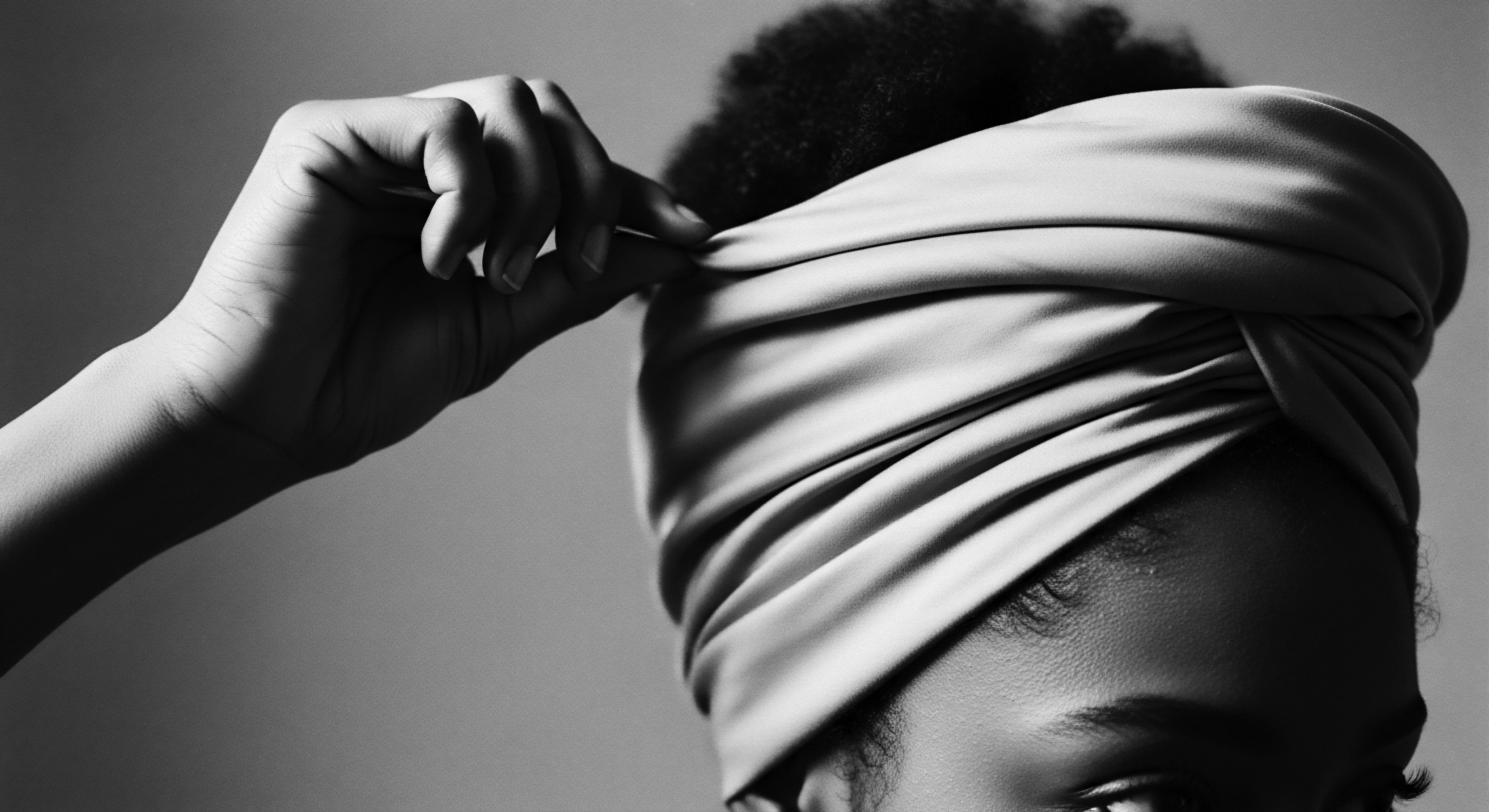
Intermediate
Venturing further into the meaning of Product Bias, we uncover its pervasive influence, deeply entwined with historical legacies of perceived beauty and societal hierarchy. The significance of this bias becomes strikingly clear when we consider the experiences of Black and mixed-race individuals, for whom hair has always been far more than a biological attribute. It has served as a profound marker of identity, a canvas for self-expression, and a repository of ancestral knowledge. When product development failed to recognize this deep cultural resonance, it created ripples affecting self-perception and health.
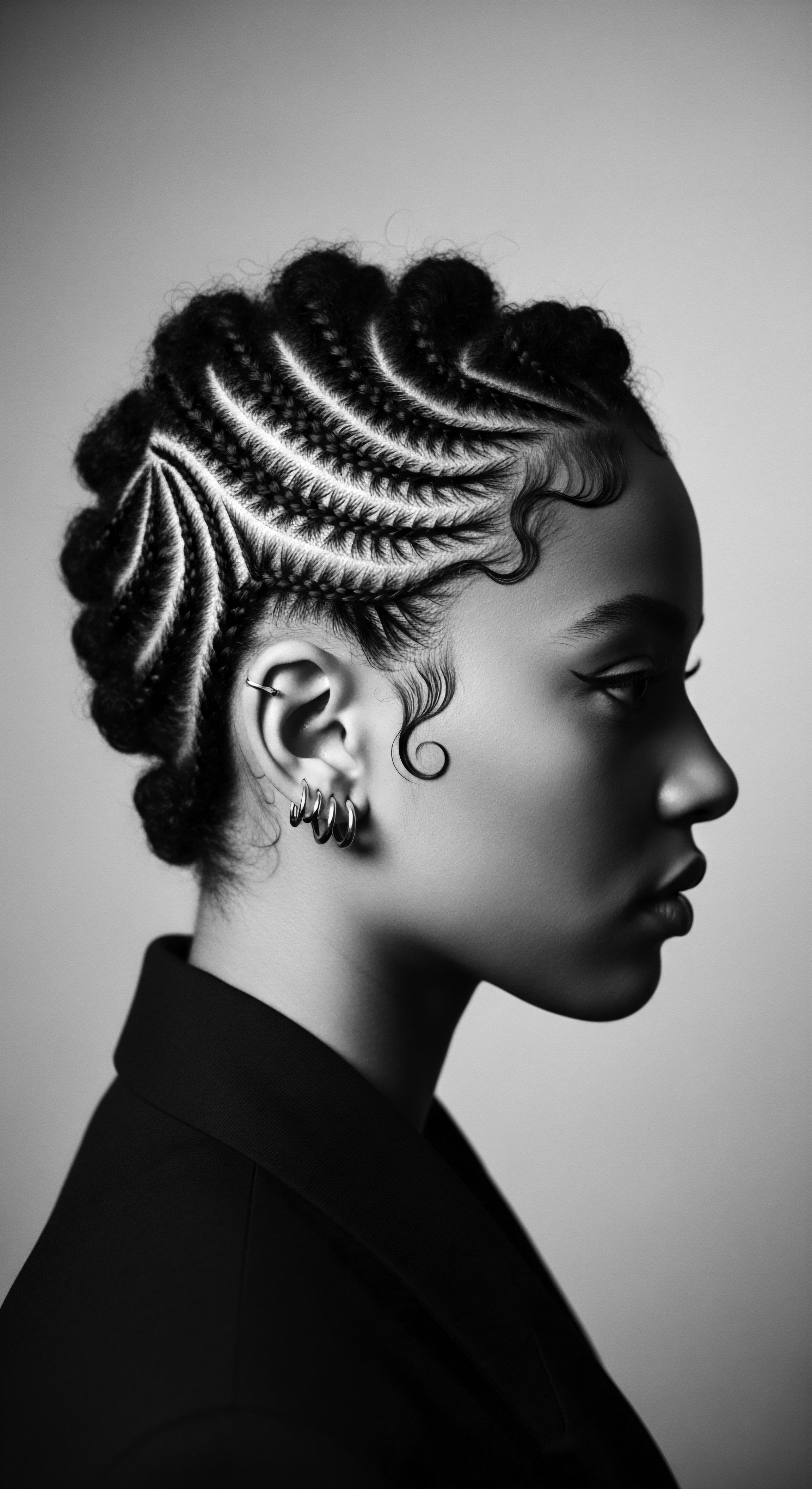
The Unseen Hand of Eurocentric Ideals in Formulation
The journey of Product Bias in hair care truly gained momentum through the widespread imposition of Eurocentric Beauty Standards. These ideals, emphasizing straight, long, and flowing hair, became the yardstick against which all hair was measured, particularly during and after the colonial periods. This societal preference meant that the cosmetic industry, largely driven by and for European aesthetics, developed products primarily suited for hair with a smooth, pliable texture.
The consequences for textured hair were profound ❉ products designed to ‘manage’ or ‘tame’ coils and kinks often employed harsh chemicals, rather than celebrating or supporting natural characteristics. This industrial response contributed to a pervasive narrative that natural Black hair was ‘unruly’ or ‘unprofessional,’ thereby reinforcing societal pressures for individuals to chemically alter their hair.
The enduring preference for Eurocentric hair textures propelled a market that largely ignored, and sometimes actively harmed, textured hair, cementing a form of Product Bias rooted in historical power imbalances.
Consider the widespread historical adoption of Chemical Relaxers within Black communities. These products, some of which contained highly caustic ingredients like lye, were designed to permanently straighten tightly coiled hair. Garret A. Morgan, an inventor, developed an early form of chemical hair relaxer in 1913, using alkaline chemicals from his work with sewing machines to loosen curly hair.
Later, companies like Proline with ‘Dark and Lovely’ commercially produced lye relaxers, using sodium hydroxide, water, petroleum jelly, mineral oil, and emulsifiers to break down the hair’s internal protein structures. This technological intervention, while offering a means of conforming to dominant beauty norms, came with significant health implications. Scalp burns, breakage, and thinning hair became common experiences for many.
This historical reality illuminates a crucial aspect of Product Bias ❉ it is not merely about products failing to work, but about products actively causing harm in pursuit of a beauty ideal that was never truly inclusive. The demand for these products was, in part, a response to deeply entrenched societal biases, including workplace discrimination where natural hairstyles were often deemed ‘unprofessional’ or less competent. A 2020 study from Duke University found that Black women with natural hairstyles, such as curly afros, braids, or twists, were often perceived as less professional and less likely to be recommended for job interviews than Black women with straightened hair.
This societal pressure created a market where chemical straighteners became widely used, with up to 95% of adult Black women in the U.S. reporting having used hair relaxers at some point in their lives.
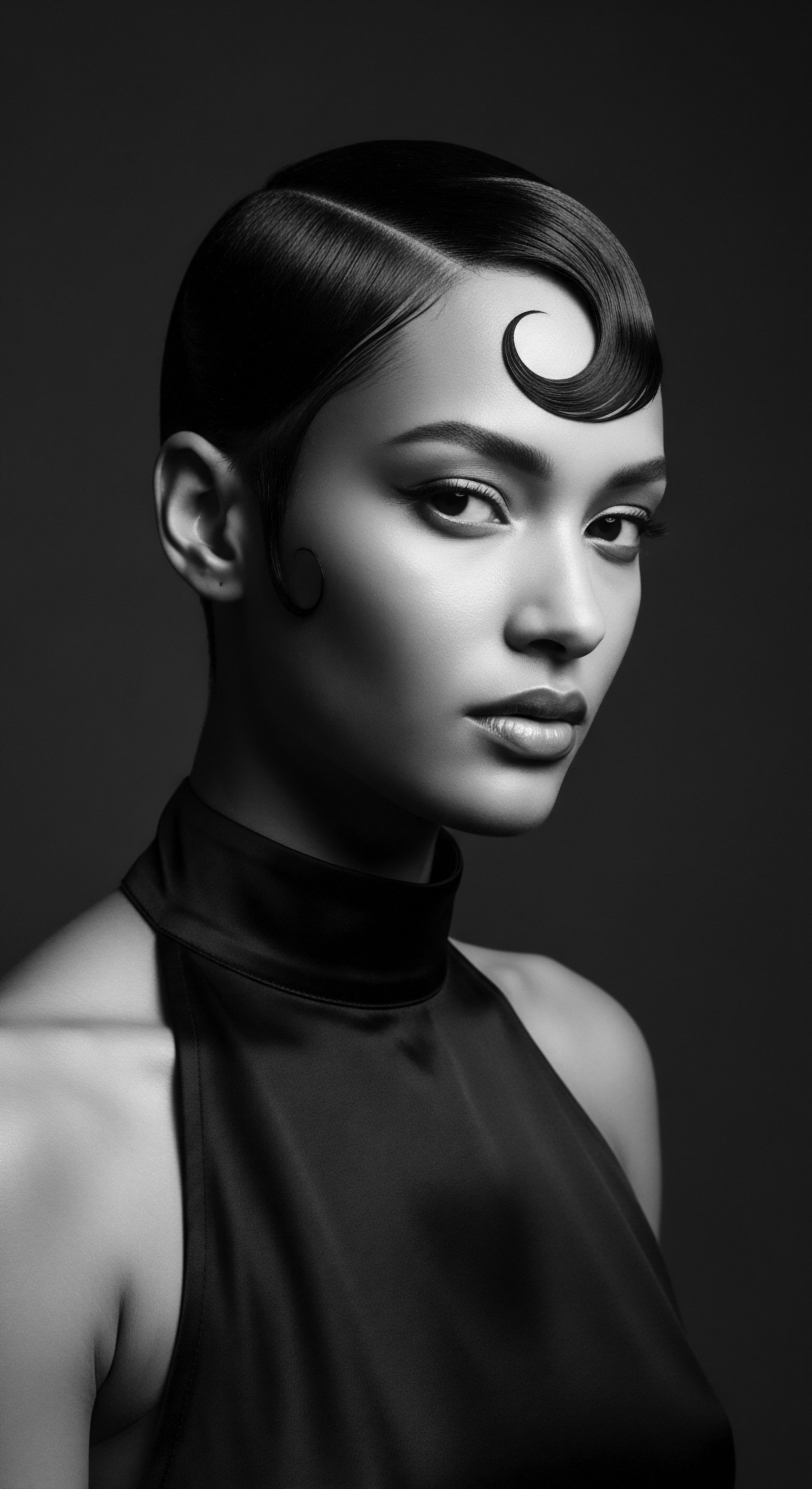
The Disconnect ❉ Absence in Education and Formulation
The absence of appropriate hair care solutions for textured hair was compounded by a significant omission in professional cosmetology education. For decades, cosmetology schools primarily focused on teaching skills for straight hair, leaving aspiring stylists ill-equipped to work with the diverse range of curls, coils, and kinks inherent to Black and mixed-race hair. This lack of education is a direct symptom of Product Bias, as it limited the professional infrastructure needed to support and advance textured hair care, perpetuating a cycle of misunderstanding and inadequate service.
| Era / Focus Early 20th Century ❉ Assimilation Era |
| Dominant Product Development Introduction of chemical relaxers (e.g. lye-based), hot combs, and pressing oils aimed at straightening. |
| Impact on Textured Hair Heritage Enabled conformity to Eurocentric standards, yet caused widespread hair damage and scalp issues, devaluing natural texture. |
| Era / Focus Mid-20th Century ❉ Limited Market & Research |
| Dominant Product Development Focus on generalized shampoos, conditioners, and styling aids suited for smoother, finer textures. |
| Impact on Textured Hair Heritage Insufficient moisture, conditioning, and detangling for coily/kinky hair, leading to breakage and frustration. |
| Era / Focus Late 20th/Early 21st Century ❉ Natural Hair Movement Genesis |
| Dominant Product Development Slow emergence of specialized products for textured hair, often from small, independent brands. |
| Impact on Textured Hair Heritage Increased options, but still faced challenges with mainstream distribution, higher costs, and limited scientific backing initially. |
| Era / Focus The historical trajectory of product development reveals a consistent pattern of Product Bias, where the needs of textured hair were an afterthought, if considered at all, for centuries. |
This historical omission within educational institutions meant that even as the demand for products catering to natural hair grew, the expertise to properly guide consumers in their use remained scarce within mainstream salons. This forced many Black women to seek out specialized, often Black-owned, salons or rely on communal knowledge passed down through families—a continuation of ancestral care practices in the face of systemic neglect. The significance of Product Bias extends therefore to the professional sphere, creating barriers to equitable access to quality hair care services.
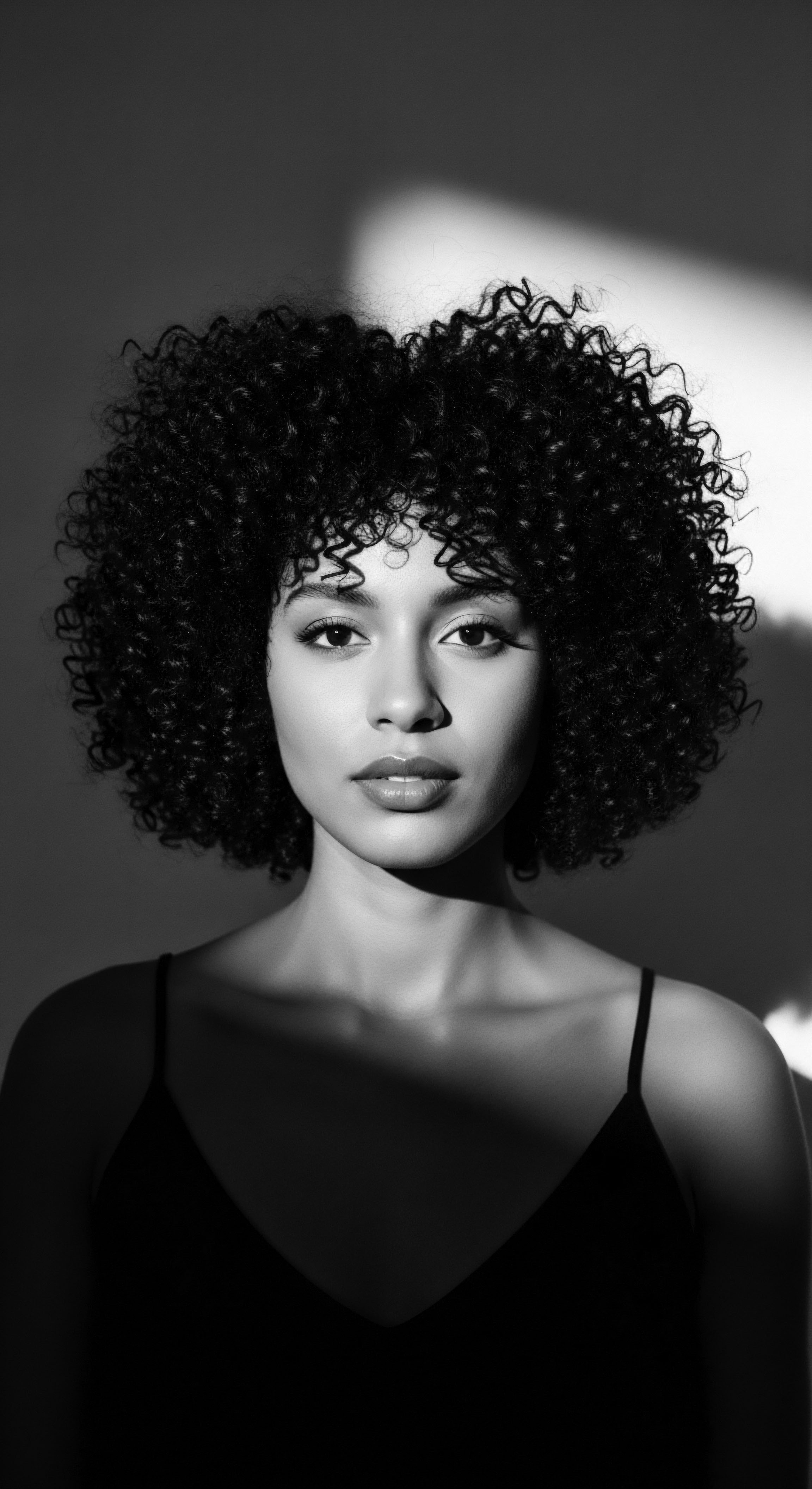
Academic
To delineate Product Bias at an academic level requires moving beyond simple observations to a robust examination of its systemic roots, socio-cultural manifestations, and profound implications, particularly for textured hair communities. This concept signifies a pervasive, often implicit, inclination embedded within the lifecycle of commercial products, from initial conceptualization and scientific research to market positioning and consumer perception, which demonstrably prioritizes the characteristics and needs of a dominant demographic while marginalizing or entirely overlooking those of others. The meaning of Product Bias here encompasses a form of structural inequality, where the mechanisms of production and commerce reinforce existing societal hierarchies. It is an intricate interplay of historical prejudice, economic incentives, and a lack of inclusive epistemologies in product development.
The explication of Product Bias in the context of textured hair care reveals a deeply entrenched pattern of environmental injustice and racialized health disparities. For generations, the standard of beauty, globally disseminated, has been unequivocally Eurocentric, favoring light skin and straight hair. This pervasive ideal has exerted immense pressure on Black women and women of color to conform, often compelling them towards products designed to alter their natural hair texture.
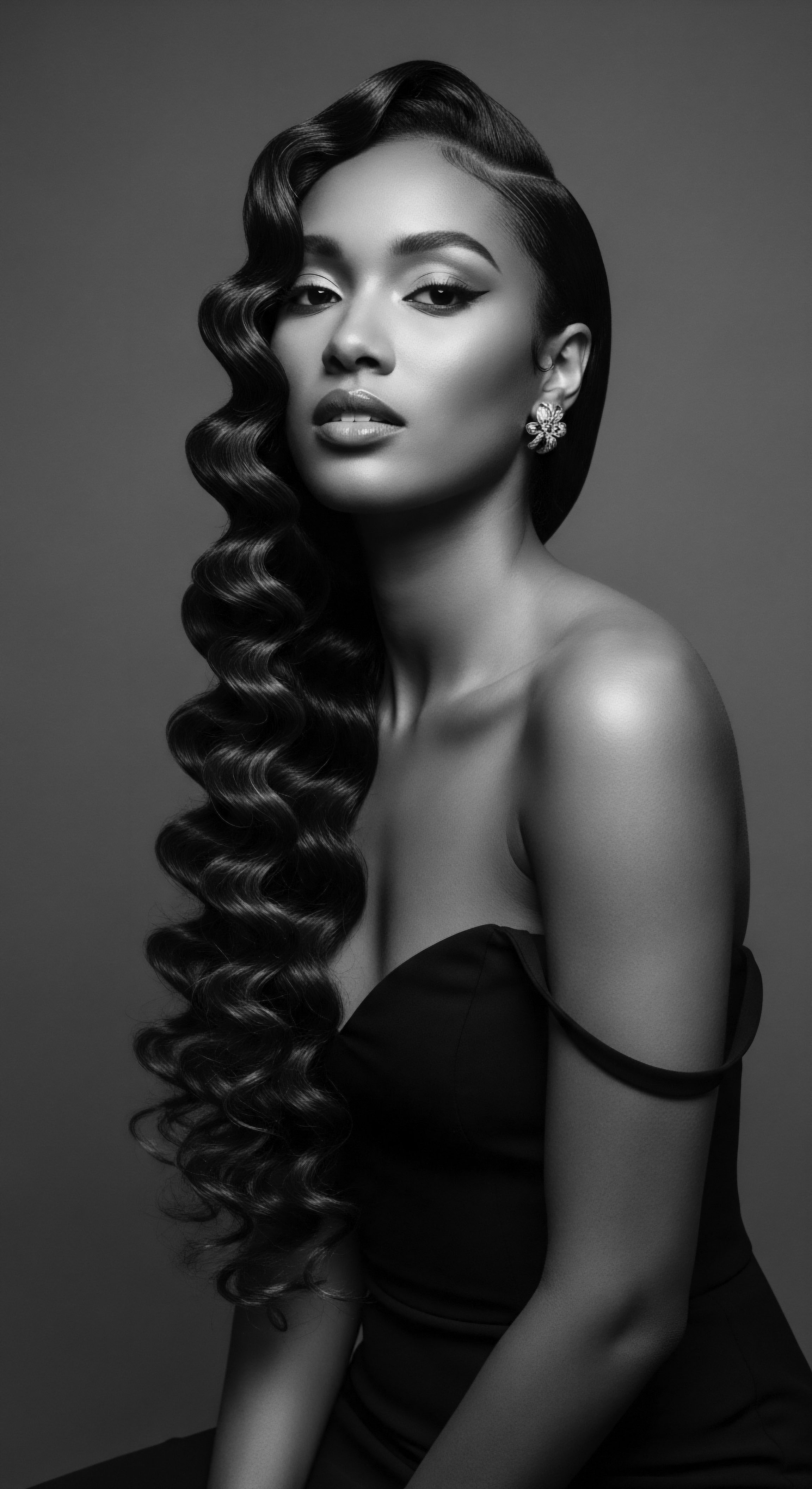
The Corrosive Legacy ❉ Chemical Relaxers as a Case Study of Product Bias
A powerful illumination of Product Bias and its profound connection to textured hair heritage lies in the history and continued use of Chemical Hair Relaxers. These products, engineered to semi-permanently straighten Afro-textured and curly hair by breaking down protein bonds, were not merely a styling choice; they represented a societal mandate, a tool for perceived acceptance within a world that devalued natural Black hair. The widespread adoption of these chemical agents, often from a young age, became a ritual of conformity, tragically intertwined with significant health risks.
Academic inquiry into this specific phenomenon reveals a disturbing pattern. Studies consistently show that products explicitly marketed to Black women frequently contain a higher proportion of hazardous chemicals compared to those marketed to white women.
The disproportionate burden of toxic chemicals in beauty products marketed to Black women constitutes an environmental injustice of beauty, directly linked to historical Product Bias.
For instance, approximately 50% of hair products marketed to Black women contain Endocrine-Disrupting Chemicals, such as parabens and phthalates, compared to a stark 7% of products marketed to white women (Harvard School of Public Health, James-Todd, T. 2020). These chemicals are implicated in a range of adverse health outcomes, including reproductive harm, neurological impairment in children, and various cancers. A particularly poignant and rigorously backed data point emerges from the Black Women’s Health Study by Boston University.
This extensive, quarter-century-long longitudinal study, which followed 59,000 self-identified African American women, found that frequent and long-term use of lye-based hair straightening products led to an approximately 30% increased risk of estrogen receptor positive breast cancer among those who used them at least seven times a year for 15 or more years, compared to less frequent users. Furthermore, a 2022 study by the National Institutes of Health reported that hair straightening chemicals have a higher associated risk with uterine cancer, with Black women who used relaxers more than twice a year or for over five years facing a 50% increase in uterine cancer risk. This critical data underscores a harsh reality ❉ Product Bias, driven by racialized beauty norms, has contributed to a profound and systemic health inequity, compelling Black women to engage with hazardous substances in the pursuit of societal acceptance.
The economic ramifications also warrant consideration. The haircare industry targeting Black consumers represents a multi-billion dollar market, with Black women reportedly spending nine times more on ethnic hair products than non-Black consumers. This significant purchasing power, however, has not always translated into equitable product safety or availability of truly nourishing options. Instead, it has often fueled the production of products that perpetuate harmful beauty standards.
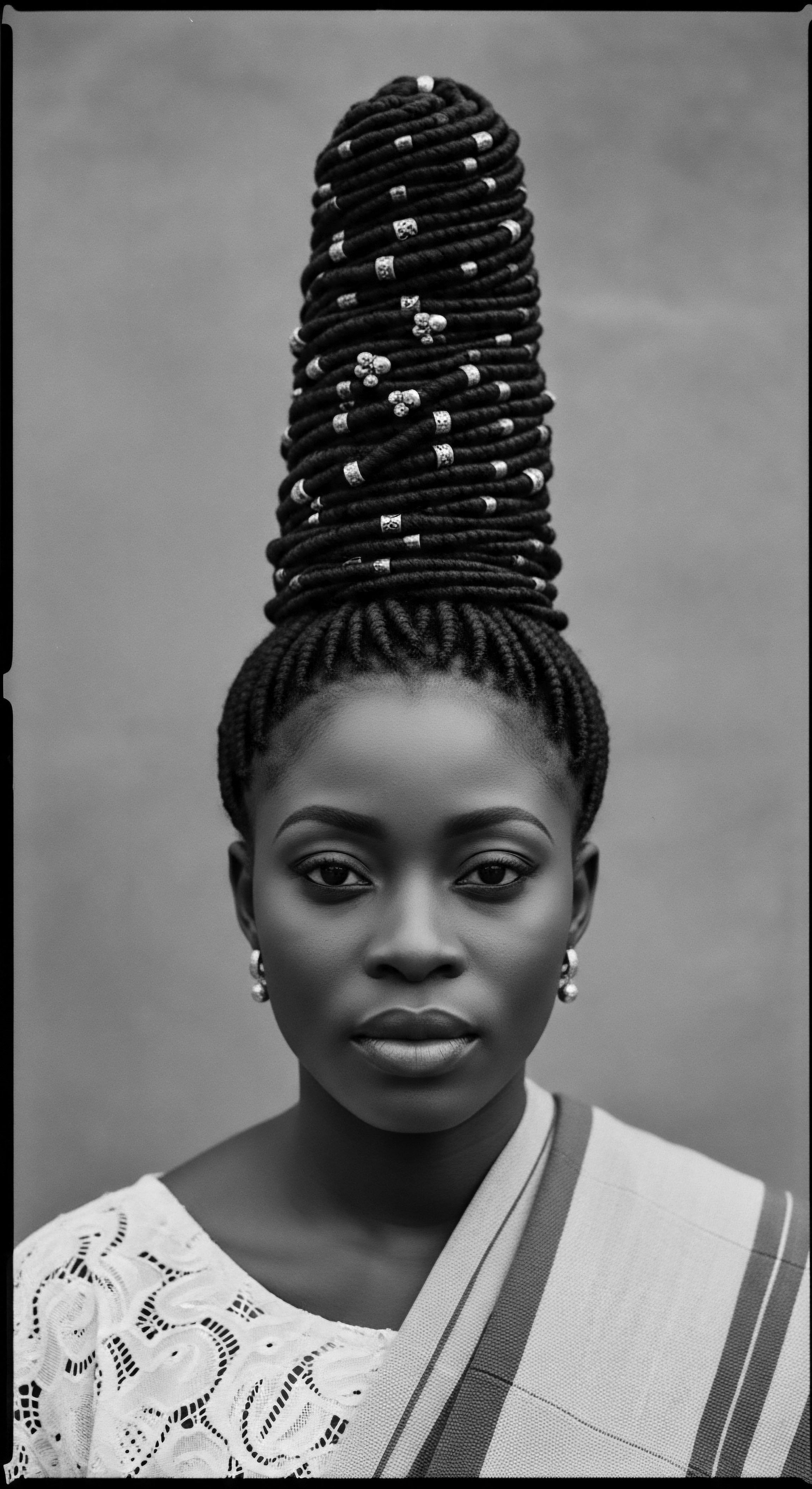
The Omission in Knowledge ❉ Educational Bias and Its Echoes
Product Bias in hair care is further compounded by a historical lack of comprehensive education within cosmetology curricula regarding textured hair. Until recent years, formal cosmetology training largely overlooked the unique properties and care requirements of curls, coils, and kinks. This educational void meant that generations of stylists, irrespective of their own backgrounds, entered the profession without the requisite knowledge to properly cut, style, and treat textured hair.
The societal ramification is that many Black women, seeking professional care, frequently encountered stylists unprepared for their hair, leading to inadequate services, damage, and feelings of alienation. A nationwide survey indicated that 86% of Black women reported facing challenges finding a stylist, with experiences ranging from stylists simply lacking the knowledge to care for their texture to encountering explicit bias and discrimination in the salon chair.
- Curricular Deficiencies ❉ Historically, standard cosmetology textbooks and training modules provided minimal, if any, instruction on working with diverse textured hair, creating a systemic skill gap among professionals.
- Professional Segregation ❉ This educational neglect indirectly contributed to the segregation of hair care services, pushing Black women towards specialized, often Black-owned, salons. This was a necessary adaptation, ensuring access to knowledgeable stylists, but it also highlighted the wider industry’s failings.
- Policy Gaps ❉ For a substantial period, state cosmetology licensing requirements did not mandate a demonstrated understanding of textured hair, effectively sanctioning a system where stylists could be licensed without comprehensive skills for all hair types.
The recent legislative shifts, such as the passage of the CROWN Act in several states and the push for mandated textured hair education in cosmetology exams (as seen in New York’s Senate Bill S6528A), represent significant steps towards rectifying this historical Product Bias. These efforts acknowledge that hair discrimination is deeply rooted in systemic racism and that promoting inclusive beauty standards necessitates foundational changes in both product development and professional training.
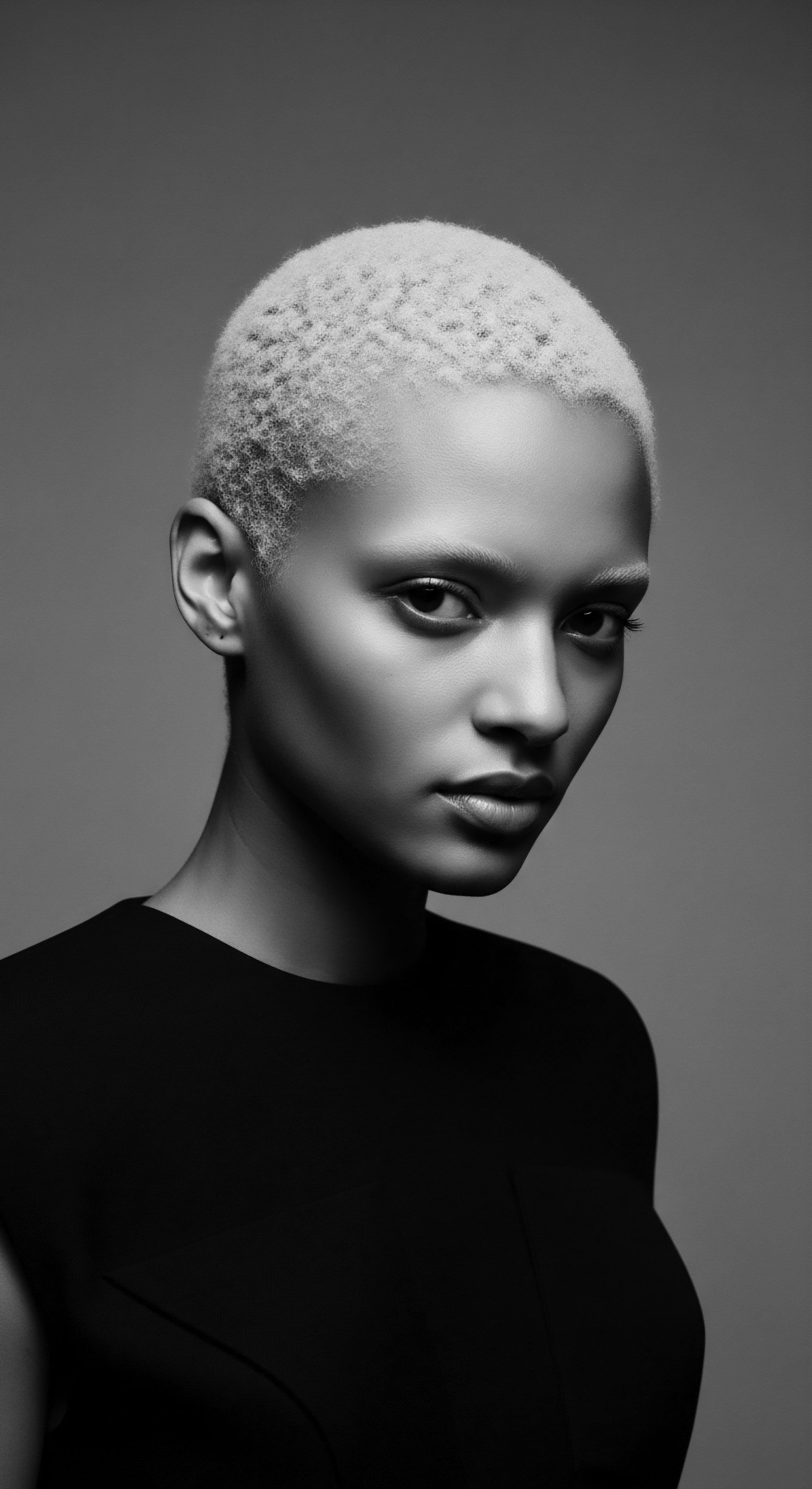
Ancestral Resilience ❉ A Counter-Narrative to Product Bias
Against this backdrop of systemic Product Bias, the enduring strength of ancestral hair practices stands as a powerful counter-narrative. Before the pervasive influence of industrialized products and Eurocentric beauty norms, diverse African and diasporic communities possessed intricate, sophisticated systems of hair care. These ancient remedies relied on natural ingredients and traditional techniques passed down through generations, reflecting a holistic understanding of hair health and its connection to overall wellbeing.
Consider the use of Shea Butter across West African cultures or the incorporation of indigenous oils like Batana Oil from Honduras, traditionally used for strengthening and revitalizing hair. These practices were not about altering texture to conform, but about nourishing, protecting, and celebrating the hair in its natural state. The meaning of these rituals was deeply communal and spiritual, interwoven with identity, status, and collective wisdom. These ancestral practices, often dismissed or unacknowledged by mainstream product developers, held the true knowledge for textured hair care.
They emphasized hydration, gentle handling, and the use of natural emollients, concepts now being “rediscovered” and repackaged by some modern brands. This rediscovery, however, must be approached with reverence and attribution, avoiding forms of Cultural Appropriation that strip these practices of their heritage and commodify them without proper recognition.
| Traditional Ingredient / Practice (Ancestral Heritage) Shea Butter (West Africa) |
| Ancestral Purpose / Application Deep moisturizing, scalp soothing, protection from sun and elements. |
| Modern Cosmetic Equivalent / Scientific Link Emollients, fatty acids, vitamins A and E; used in conditioners, hair masks, and leave-ins. |
| Traditional Ingredient / Practice (Ancestral Heritage) Rice Water (Asian traditions, echoes in African rituals) |
| Ancestral Purpose / Application Strengthening, promoting growth, adding shine; used as rinses. |
| Modern Cosmetic Equivalent / Scientific Link Inositol, amino acids; used in shampoos, conditioners, and hair treatments for protein and repair. |
| Traditional Ingredient / Practice (Ancestral Heritage) Aloe Vera (Various Indigenous Cultures) |
| Ancestral Purpose / Application Scalp healing, conditioning, promoting growth. |
| Modern Cosmetic Equivalent / Scientific Link Vitamins, minerals, enzymes; used in gels, conditioners, and scalp treatments for hydration and soothing. |
| Traditional Ingredient / Practice (Ancestral Heritage) Herbal Infusions (e.g. Rosemary, Amla, Hibiscus) |
| Ancestral Purpose / Application Stimulating circulation, strengthening follicles, preventing loss. |
| Modern Cosmetic Equivalent / Scientific Link Antioxidants, anti-inflammatory compounds; used in hair oils, shampoos, and scalp tonics. |
| Traditional Ingredient / Practice (Ancestral Heritage) These ancestral practices provide a blueprint for genuine hair wellness, offering a profound understanding of hair's elemental needs that often transcends the limitations of commercially driven Product Bias. |
Product Bias, in its academic interpretation, therefore, becomes a lens through which we scrutinize the past and contemporary implications of market forces on marginalized identities. It demands a critical understanding of how the lack of diverse representation in product development and professional training perpetuates systemic discrimination, leading to adverse health outcomes and a continuous struggle for self-affirmation within culturally distinct communities. Addressing this bias requires more than superficial inclusivity; it demands a fundamental shift in research, formulation, education, and marketing, rooted in genuine respect for diverse hair heritages and their inherent wisdom.

Reflection on the Heritage of Product Bias
The journey through the intricate layers of Product Bias reveals a narrative far grander than mere commercial oversight; it illuminates a persistent tension between prescribed norms and the vibrant truth of textured hair heritage. Echoes from the Source remind us that care for hair, especially coiled and kinky strands, has always been a practice rooted in ancestral wisdom, long before industrialization sought to redefine beauty through a singular lens. These ancient traditions, passed down through generations, were holistic rituals, deeply connected to community, identity, and the very spirit of a people.
The Tender Thread of continuity, however, faced constant strain under the weight of Eurocentric beauty standards, which fueled a product landscape often ill-suited or actively harmful to Black and mixed-race hair. The painful history of chemical relaxers, driven by a societal bias that equated straightened hair with professionalism and beauty, stands as a stark testament to this era of Product Bias, resulting in quantifiable health disparities.
Today, as we move toward the Unbound Helix, there is a collective yearning for a deeper, more authentic connection to hair. The movement towards natural hair is not simply a trend; it is a profound reclamation of heritage, a courageous assertion of self in the face of centuries of negation. Understanding Product Bias in its historical and contemporary forms becomes a vital tool for this reclamation, empowering individuals to discern what truly serves their hair’s inherent biology and ancestral legacy.
It compels us to demand products that are not just ‘inclusive’ in name, but genuinely formulated with an understanding of diverse hair needs, rooted in sound science and a profound reverence for the varied traditions of care. The true future of hair wellness lies in honoring this past, nurturing the tender thread of traditional knowledge, and allowing each strand to flourish as an unbound expression of its unique and magnificent heritage.

References
- Nkimbeng, Manka, Bernice B. Malaika Rumala, Crystal M. Richardson, Shemekka Ebony Stewart-Isaacs, and Janiece L. Taylor. “The Person Beneath the Hair ❉ Hair Discrimination, Health, and Well-Being.” Health Equity 7, no. 1 (2023) ❉ 406–10.
- Rosette, Ashleigh Shelby. “Research Suggests Bias Against Natural Hair Limits Job Opportunities for Black Women.” Duke University’s Fuqua School of Business, 2020.
- Edwards, Lariah, et al. “How Racialized Beauty Norms Motivate the Use of Toxic Beauty Products Among Women of Color.” Environmental Justice (2023).
- James-Todd, Tamarra. Dissertation. Columbia University, 2008.
- Payne-Patterson, Jasmine. “The CROWN Act ❉ A Jewel for Combating Racial Discrimination in the Workplace and Classroom.” Policy Memo. Economic Policy Institute, 2023.
- Byrd, Ayana D. and Lori L. Tharps. Hair Story ❉ Untangling the Roots of Black Hair in America. St. Martin’s Press, 2001.
- Wilcox, Amanda. “Femininity, Hair Relaxers, and the Impact of Beauty Standards on Black Women’s Health.” Health Matters, 2017.
- Matjila, Chéri R. “The Meaning of Hair for Southern African Black Women.” University of the Free State, 2020.
- Powell, Crystal. “Bias, Employment Discrimination, and Black Women’s Hair ❉ Another Way Forward.” BYU Law School, 2018.
- Davenport, Marie. Oral history interview by Kimber Thomas, Library of Congress, cited in “Heavy is the Head ❉ Evolution of African Hair in America from the 17th c. to the 20th c.” Library of Congress, 2020.
